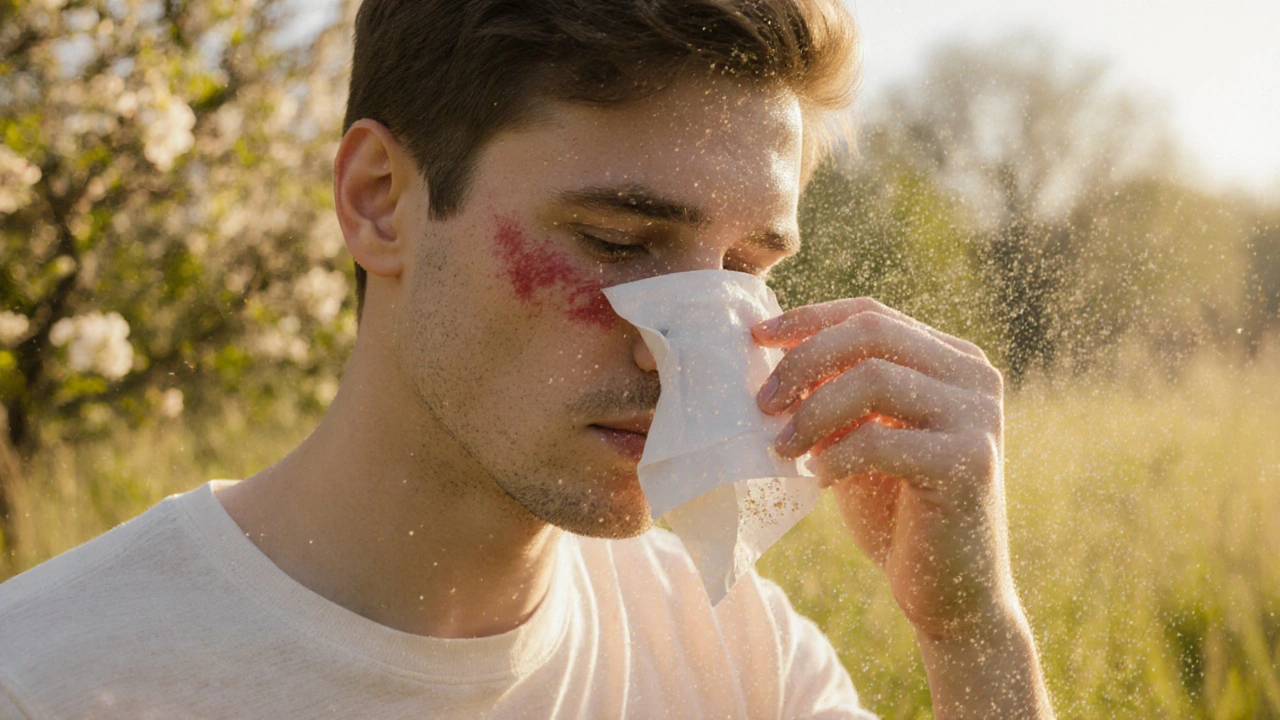Pollen Exposure: What It Means for Your Health
When dealing with pollen exposure, the inhalation of plant pollen particles that can trigger immune reactions. Also known as pollen inhalation, it is a primary driver of seasonal allergy symptoms. Understanding how it interacts with the body lets you take smarter steps toward relief.
One of the most common outcomes of pollen exposure is allergic rhinitis, an inflammation of the nasal passages caused by an overactive immune response to pollen. It’s often called hay fever and shows up as sneezing, itchy eyes, and a runny nose. This condition illustrates the link: pollen exposure triggers allergic rhinitis. Managing the inflammation often means turning to antihistamines, medications that block histamine receptors to reduce allergy symptoms. Known as histamine blockers, they help calm the immune response and let you breathe easier.
How Environment and Lifestyle Shape Your Reaction
Beyond the direct trigger, the surrounding air quality, the level of pollutants, pollen count, and moisture in the atmosphere plays a huge role. Poor air quality can amplify pollen levels, making air quality influences pollen exposure. Simple steps like checking local pollen forecasts, using HEPA filters, or staying indoors on high‑count days can cut down the amount of pollen you inhale. Another factor is your immune response, the body’s defense system that decides whether pollen is harmless or an enemy. A balanced immune system reacts appropriately, while an overactive one launches the allergic cascade.
When you know the pieces—pollen exposure, allergic rhinitis, antihistamines, air quality, and immune response—you can build a practical plan. Start with a daily check of pollen counts, keep windows closed during peak times, and have a trusted antihistamine on hand. If symptoms persist, consider nasal corticosteroids or allergy shots, which target the immune response more directly. Remember, managing pollen exposure requires antihistamines and lifestyle adjustments. This approach not only eases discomfort but also reduces the chance of complications like sinus infections.
The collection of articles below dives deeper into each of these areas. You’ll find guides on choosing the right antihistamine, tips for monitoring air quality, and explanations of how the immune system reacts to pollen. Whether you’re looking for quick relief or long‑term strategies, the resources are organized to match the key topics we just covered. Let’s explore the practical advice and detailed information that can help you stay comfortable throughout the pollen season.

Seasonal Allergies and Their Effect on Allergic Conjunctivitis Rates
Explore how seasonal pollen spikes raise allergic conjunctivitis rates, learn to diagnose, treat and prevent eye allergy flare‑ups, and see practical tips for patients and clinicians.
Continue Reading



